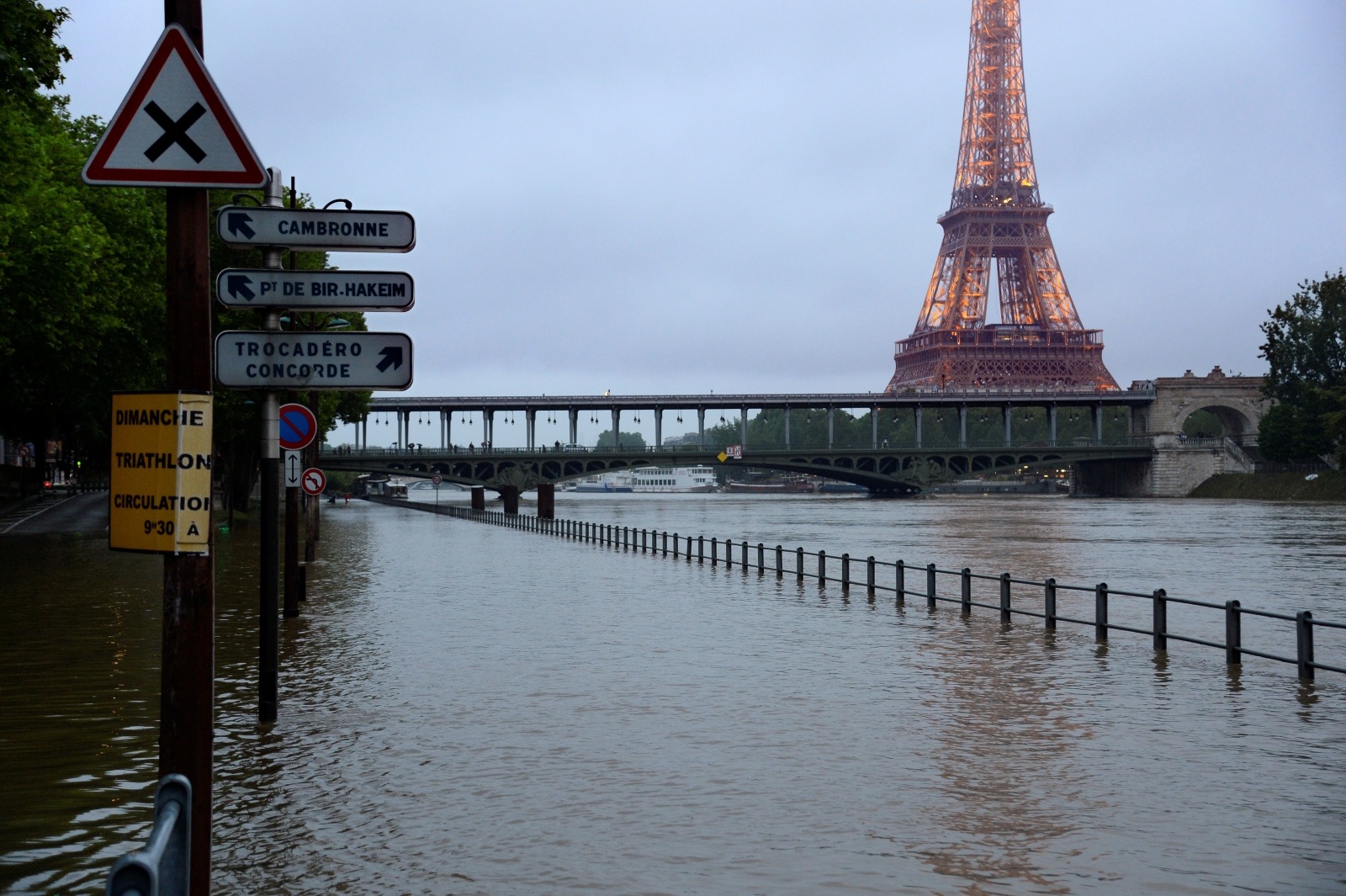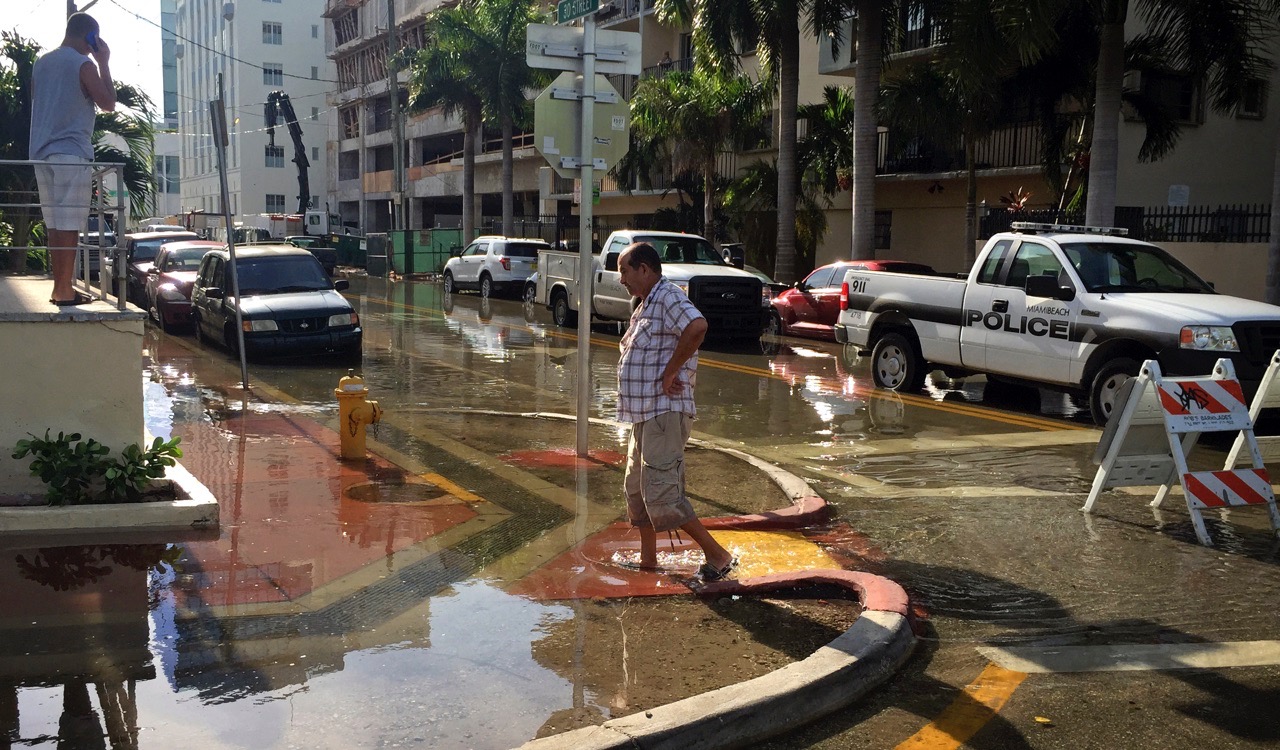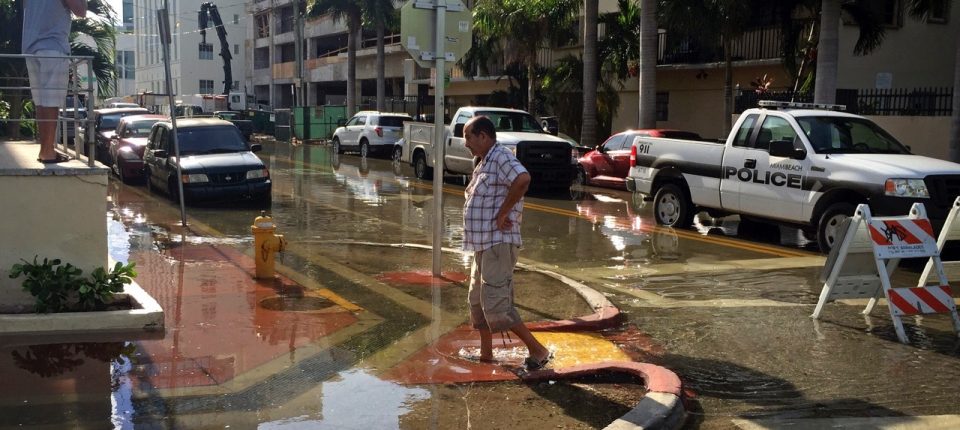Taking a Nudge From the Insurance Industry
I recently took a trip to Paris and was struck by the remnants of the long clean up following the disastrous flooding which ravaged the city and surrounding regions in France and Southwest Germany in June of this year. According to the general director of the French mutual insurance group MAIF, the natural disaster is expected to cost insurers roughly €2.3 billion following the filing of all claims. Major weather-related natural disasters like what took place in Paris are occurring more frequently and with greater human and economic consequence compared to previous decades.

June 2016 flooding in Paris (Photo courtesy The International Business Times)
Hurricane Sandy affected a wide swath of the eastern seaboard in the United States in 2012 and cost insurers an estimated €78 billion. A report compiled by a consortium of Australian insurance and reinsurance companies (or companies that insure the insurance companies) found that from 2010-2015 weather-related natural disasters cost an estimated €6 billion annually in insurance payouts. By 2050, weather-related natural disasters are expected to become more frequent and intense because of climate change that insurance payouts will likely exceed €33 billion each year. Climate change has already begun to affect the bottom line of global insurers in a devastating fashion; for the industry to remain solvent, it must change the way risk is approached.
Most of us only hear about the natural disasters that cause a tremendous economic loss and inflict calamitous human misfortune. All told, estimates show there are roughly 388 weather-related natural disasters per year, and this number is on the rise. It cannot be said that climate change is the definitive cause of a specific event, but it can explain the overall trend. Natural disasters are responsible for annual infrastructure damages of €225 billion and approximately 30,000 lives per year. These numbers are only expected to accelerate, so how can cities prepare and work in concert with global insurers?

A architect’s envisioning of an adaptive New Orleans using classic Dutch canals. (Photo courtesy The Atlantic)
The Insurance Industry Sounds the Alarm for Adaptation
Cities around the world are increasingly vulnerable to weather-related natural disasters exacerbated by climate change. As dynamic, responsive, flexible networks, cities can choose to respond to their increasing vulnerabilities and insurers and reinsurers can provide strong economic incentives to adapt. For cities that choose to take no preventative measures on climate change, serious financial repercussions may ensue. In a 2014 Standard & Poor’s report, the credit rating agency spoke clearly to policymakers by stating that cities who are at particularly high vulnerability to extreme weather-related natural disasters that do not adopt stringent adaptive policies may be penalized with credit downgrading. For cities with strong credit ratings, there is a hefty incentive to make use of their access to credit for climate adaption projects to maintain both the long-term stability of their city in the face of increased threats from natural hazards and to retain access to future lines of credit.
Large insurers have a fiduciary responsibility to inform investors of material risks and climate change has been deemed as such. To mitigate some risk, reinsurers have been working with insurance companies to reduce morbid risk by moving to no longer insure assets in dangerously vulnerable areas. For example, in many Gulf Coast states, repeated hurricanes made it too risky for one insurance company to provide flood insurance to homeowners. In Florida, for example, Allstate once insured as many as 1.2 million private homes but has cut back to 400,000 today with an ultimate goal of less than 100,000. Part of the reason Allstate has taken such aggressive actions in Florida is because the state government largely ignores climate change which has led many cities in the state to be unsuccessful in their efforts in enacting adaptation policies that would reduce potential risks for insurers.
In regions particularly vulnerable to climate change like South Florida, the entire insurance industry has become vulnerable because the premium increases haven’t kept pace with the elevated threats. This imbalance has led some insurance companies to simply leave vulnerable regions. With large insurance companies moving out of Florida, the only private insurers left in the area are small, regional insurers. This creates a dangerous situation because these smaller companies don’t have sufficient capital to cover tens of thousands of claims at once in the event of a large disaster. To fix this disparity, the state of Florida began offering low-cost subsidized insurance through Citizens Property Insurance Corporation to help protect property owners. This program has been successful thus far, but a new problem has now emerged: the state of Florida is now on the hook for untold billions. According to some economists, a single major natural disaster could bankrupt the state. Florida’s not the only state offering subsidized flood insurance. In 2010, there were over 5.5 million homes covered through government subsidized flood insurance programs and that number is only expected to have increased.
Innumerable regions have become crippled from increasing vulnerability to climate change and weather-related natural disasters. In places like South Florida that are at severe risk, some communities are grappling with the choice of having their regional government be at the mercy of fleeing insurance companies, paying more for their home’s natural disaster insurance than for their mortgages or to move and become climate migrants, seeking refuge in more resilient places. This is a reality that is becoming more apparent in more cities around the world, but local governments can take action.
Investing in Adaptation
While some insurance companies have become risk adverse, forcing local and regional governments to take precarious actions, some cities are taking charge and encouraging active local adaptation investment to mitigate the risk of climate change . Two of the largest insurance industry trade associations have recently called on insurers to partner with local governments to develop climate change solutions and reduce risks. Cities should take advantage of this by aggressively investing in climate adaptation to lower their vulnerabilities to weather-related natural hazards and reduce high collateral exposure for private and public insurers.
The city of Miami Beach, located directly along the Atlantic Ocean at an average elevation of just 1.3 meters, was forced to make a perilous decision: be wiped out by climate change or aggressively adapt. Rising insurance rates in the city had already become prohibitively expensive for many residents when the city finally decided to act. In 2013, the city elected Mayor Philip Levine who ran campaign commercials featuring himself kayaking through flooded streets and promising to make significant investments in climate adaptation.

Typical flooding in Miami Beach. (Photo courtesy The Miami Herald)
In the wake of his election, the city of fewer than 90,000 people has begun investment in a €450 million climate adaptation plan including the installation of 80 pumps, increasing the height of existing sea walls, modifying zoning and building codes, and even raising the elevation of roads. Due to Miami Beach and other south Florida cities’ investment in climate adaptation, thousands of homes in the region no longer require flood insurance by law, saving homeowners thousands per year. It still may be wise for homeowners to retain their flood insurance policies but that is a choice they now get to make.
Cities around the world can learn from the experience of Miami Beach. Though it is located in a particularly vulnerable area, the city has chosen to invest in climate adaptation rather than simply waiting for the inevitable to strike. Miami Beach does not suffer from disillusion. City officials fully comprehend the fact that their future is uncertain but they believe investing in adaptation will at least buy them more time as a habitable, resilient community. Cities that suffer from high weather-related climate risks and have been financially crippled with rising insurance premiums can make wise investments in their future stability by pragmatically investing in climate adaptation.




